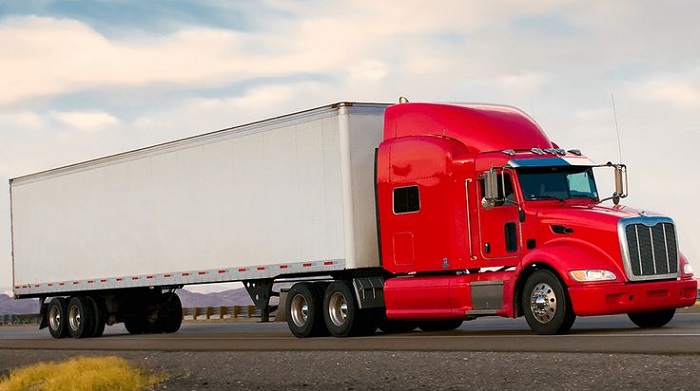Planning efficient multi-stop dry-van routes across the Great Lakes Region

Efficient multi-stop routing is a game-changer for carriers operating dry-van regional shipments across the Great Lakes transport corridor. This vital freight network spans major urban hubs from Chicago to Detroit and up through Milwaukee and Cleveland, demanding meticulous planning to maximize fuel savings and reduce mileage cut. Unlike single-stop trips, multi-stop routing requires careful coordination of drop sequencing and backhaul pairing to minimize empty miles and avoid costly detention clocks.
Leveraging advanced route optimizer technology, carriers can seamlessly sync Electronic Logging Devices (ELD) with real-time traffic and delivery windows, ensuring compliance while shaving precious hours off the route. The intricacies of multi-stop dry-van routes in the Great Lakes region highlight the importance of balancing load priorities with road realities, such as fluctuating weather and port congestion.
In this article, we’ll explore proven strategies for planning efficient multi-stop dry-van routes, focusing on optimizing resources, improving delivery reliability, and driving down operational costs. Mastering these elements can significantly enhance profitability and sustainability in the competitive Great Lakes transport landscape.
2. Benefits of Dry-Van Regional Transport and Fuel Savings
Dry-van regional transport across the Great Lakes corridor offers distinct advantages, especially when employing strategic multi-stop routing. By optimizing drop sequencing, carriers can reduce unnecessary detours, leading to significant fuel savings and a noticeable mileage cut. This efficiency not only lowers operational costs but also minimizes wear and tear on vehicles, extending fleet longevity.
Integrating route optimizer tools with ELD sync capabilities ensures real-time adjustments to traffic and delivery windows, which prevents costly delays and detention clocks. Moreover, smart backhaul pairing fills empty return loads, maximizing asset utilization and further cutting fuel consumption.
Together, these tactics create a seamless flow of goods that boosts delivery reliability without sacrificing cost-effectiveness. For dry-van regional carriers, mastering these efficiencies in the Great Lakes transport corridor translates into a competitive edge, supporting sustainable growth while meeting tight customer deadlines. Ultimately, the right multi-stop strategy enhances profitability and contributes to greener, smarter freight operations.
3. Hub-and-Spoke Model: Milwaukee to Cleveland Loop Optimization
Implementing a hub-and-spoke model for the Milwaukee to Cleveland loop streamlines multi-stop routing across the Great Lakes transport corridor, unlocking key efficiencies:
- Centralized Hub Utilization: Milwaukee serves as the primary hub, consolidating inbound loads for optimal dry-van regional distribution toward Cleveland and intermediate stops.
- Strategic Drop Sequencing: Prioritizing drop sequencing based on proximity and delivery windows minimizes backtracking, achieving a significant mileage cut and improved fuel savings.
- Backhaul Pairing Integration: Coordinating backhaul pairing at the Cleveland spoke ensures empty miles are reduced, maximizing fleet productivity on return legs.
- Real-Time ELD Sync: Continuous route optimizer and ELD sync allow dynamic adjustments to traffic and detention clocks, maintaining schedule adherence and preventing costly delays.
- Load Balancing Across Spokes: Distributing cargo volumes evenly between Milwaukee and Cleveland spokes prevents bottlenecks, optimizing load capacity and reducing idle times.
By leveraging this hub-and-spoke framework, carriers enhance multi-stop routing efficiency, cutting costs while increasing reliability within the Great Lakes dry-van regional network.
4. Utilizing Route Optimizer Tools and Drop Sequencing Techniques
Maximizing efficiency in multi-stop routing across the Great Lakes transport corridor hinges on smart use of technology and strategic drop sequencing. Key tactics include:
- Advanced Route Optimizer Integration: Employ route optimizer tools that sync with Electronic Logging Devices (ELD) to incorporate real-time traffic updates, delivery windows, and driver hours. This integration helps avoid detention clocks and ensures compliance.
- Dynamic Drop Sequencing: Prioritize stops based on location clusters and time-sensitive deliveries, reducing unnecessary backtracking and achieving a meaningful mileage cut that drives fuel savings.
- Backhaul Pairing Coordination: Use route optimization to identify potential backhaul loads, filling empty return trips and enhancing dry-van regional asset utilization.
- Real-Time Rerouting Capabilities: Adapt routes dynamically in response to traffic delays or weather disruptions, maintaining schedule reliability and minimizing idle times.
- Data-Driven Load Balancing: Analyze historical route data to balance load distribution effectively, enhancing fuel efficiency and reducing wear on equipment.
By leveraging these tools and techniques, carriers operating in the Great Lakes corridor can streamline multi-stop dry-van routing, significantly boosting operational efficiency and cutting costs.
5. Integrating Backhaul Pairing for Enhanced Efficiency
A critical lever for maximizing efficiency in multi-stop routing across the Great Lakes transport corridor is the strategic integration of backhaul pairing. By proactively identifying and scheduling return loads that align with outbound routes, carriers can dramatically reduce empty miles — a key contributor to wasted fuel and increased operational expenses in dry-van regional transport.
Leveraging route optimizer tools that incorporate ELD sync and real-time traffic data enables carriers to pinpoint optimal backhaul opportunities within tight delivery windows. This synchronization not only helps avoid detention clocks but also ensures smooth transitions between outbound and inbound legs, improving driver utilization.
Effective backhaul pairing, combined with intelligent drop sequencing, creates a cyclical flow that minimizes deadhead mileage and maximizes asset productivity. For carriers operating throughout the Great Lakes region, this approach delivers measurable fuel savings and a significant mileage cut, while enhancing overall route reliability.
Ultimately, integrating backhaul pairing into multi-stop routing strategies transforms empty return trips into revenue-generating movements — driving both cost efficiency and sustainability in one of North America’s busiest freight corridors.learn more.
6. Managing Detention Clocks and ELD Sync to Reduce Delays
Effectively managing detention clocks is pivotal in multi-stop routing across the Great Lakes transport corridor, where tight schedules and multiple stops increase the risk of costly delays. Leveraging ELD sync with advanced route optimizer tools allows carriers to monitor real-time driver hours and delivery windows, proactively preventing detention time from accumulating. By integrating ELD data, dispatchers can adjust routes dynamically, reordering stops through intelligent drop sequencing to steer clear of potential hold-ups.
This real-time synchronization not only keeps drivers compliant but also minimizes idle time at delivery points, ensuring that dry-van regional fleets maintain momentum and achieve a meaningful mileage cut. Coordinated backhaul pairing further streamlines operations by aligning return loads with timing constraints, reducing wait times tied to detention.
In the competitive Great Lakes dry-van regional market, mastering detention clock management through ELD sync and responsive routing translates into tangible fuel savings and enhanced reliability. This strategic approach helps carriers avoid unnecessary downtime, optimize driver productivity, and maintain smooth multi-stop flow — ultimately boosting profitability and operational efficiency throughout the corridor.
7. Strategies for Mileage Cut and Cost Reduction
Achieving a meaningful mileage cut is essential for cost reduction in multi-stop routing across the Great Lakes transport corridor. Prioritize precise drop sequencing to minimize backtracking and idle time, leveraging route optimizer tools that integrate ELD sync for real-time adjustments. Strategically coordinate backhaul pairing to fill empty return trips, reducing deadhead miles and maximizing dry-van regional asset utilization.
Proactively managing detention clocks through dynamic rerouting keeps schedules tight and limits costly delays. Employ data-driven load balancing to distribute freight evenly, preventing bottlenecks and optimizing fuel consumption. Together, these strategies drive significant fuel savings while enhancing delivery reliability.
By blending technology with smart operational tactics, carriers can streamline multi-stop dry-van routes across the Great Lakes, cutting mileage and operational expenses while boosting overall efficiency and profitability.
8. Conclusion: Maximizing Efficiency in Multi-Stop Dry-Van Routes
Efficient multi-stop dry-van routing across the Great Lakes region is essential for cutting costs, improving delivery times, and boosting customer satisfaction. By leveraging data-driven route planning and advanced GPS technology, carriers can optimize stop sequences, reduce empty miles, and navigate complex regional traffic patterns seamlessly. Prioritizing load consolidation and strategically scheduling pickups and drop-offs help maximize trailer utilization, ensuring every mile counts. Additionally, understanding the unique economic hubs and infrastructure around the Great Lakes enables smarter routing decisions that avoid bottlenecks and adapt to seasonal challenges. Integrating real-time traffic updates and weather forecasts further enhances route flexibility, minimizing delays and operational risks. Ultimately, combining these best practices with continuous performance analysis empowers logistics operators to streamline dry-van routes that not only save time and fuel but also strengthen competitive edge in this vital North American corridor. Embrace these strategies to unlock peak efficiency across your multi-stop Great Lakes dry-van operations and drive sustained growth in today’s dynamic freight landscape.



